On Rocket Roundup, launches include the latest from Rocket Lab, a Blue Origin crewed launch, several Chinese launches, and a pair of Russian communication satellites. Plus, this week in rocket history, we look back at Apollo 17.
Podcast
Show Notes
Rocket Lab Electron launches sats for BlackSky Global
- BlackSky press release
- Spaceflight Industries Celebrates Successful Launch of the BlackSky Pathfinder Satellite Aboard India’s PSLV (BlackSky)
400th Long March rocket launches pair of satellites
- CNSA press release
- China successfully launches Group 05 satellites of Shishi-6 (KJT)
New Shepard launches full complement of space tourists
- Blue Origin press release
- FAA press release
Proton launches two Russian satellites into geostationary orbit
- ISS-Reshetnev press release
China launches communications relay
- CASC press release
- China launches new Tianlian relay satellite (Xinhua)
This Week in Rocket History: Apollo 17
- A Running Start – Apollo 17 up to Powered Descent Initiation (NASA via Internet Archive)
- The blue marble (NIH)
- The End of the Beginning (NASA)
Transcript
Hello, and welcome to the Daily Space. My name is Dr. Pamela Gay.
And I am Erik Madaus.
Most weekdays, the CosmoQuest team is here putting science in your brain.
Today, however, is for Rocket Roundup.
Let’s get to it, shall we?

First up, on December 8 at 00:40 UTC, a Rocket Lab Electron launched two more satellites for BlackSky Global’s commercial imaging constellation from LC-1 at the Mahia Peninsula in New Zealand.
Like the last Electron launch, “A Data with Destiny” was another dedicated mission for BlackSky. However, unlike the last mission, this first stage was not equipped to survive reentry and no attempt was made to recover it.
After launch, the first stage burned nominally through to engine cutoff and released the upper stages to continue into orbit. All other flight events were nominal including fairing separation and battery swap. An hour after launch, the two satellites were successfully deployed into the target orbit. This launch, along with the previous Electron launch and the rideshare on Starlink 32, means that half of Black Sky’s current constellation of twelve satellites were launched over the course of about three weeks. These six satellites were commissioned into the constellation in a very short period of time, with the pair on the Starlink rideshare launch being operational in just over half a day. The full Black Sky constellation will consist of sixty satellites.
From one launch that took two satellites into orbit to another launch that took two satellites into orbit and also marked a major milestone.
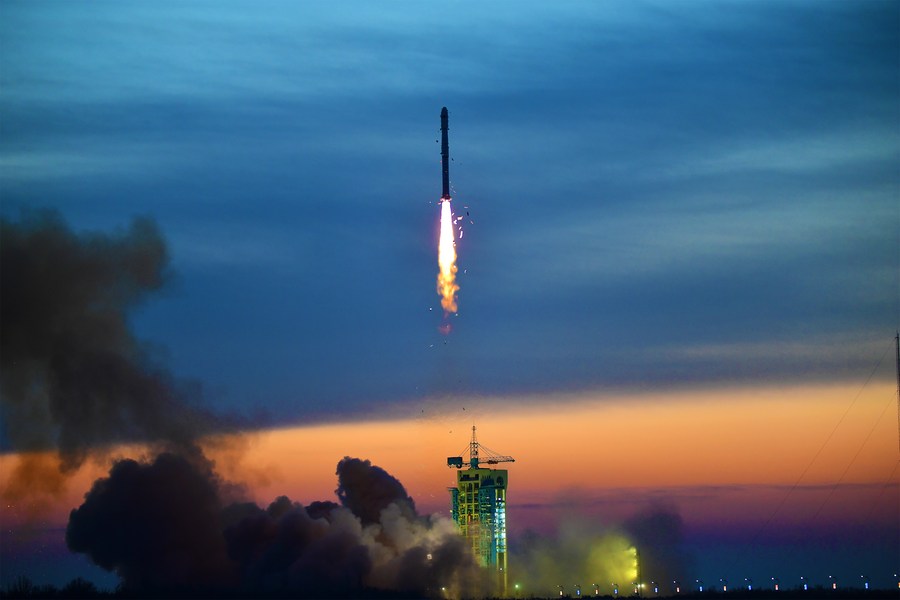
Next up, on December 10 at 00:11 UTC, a Chinese Long March 4B launched the Shijian 6 group 5 satellites into orbit from the Jiquan Satellite Launch Center in China.
The satellite’s mission was described as, you guessed it, “space environment exploration and new technology test verification”. Shijian 6 satellites have been launched in pairs every few years since 2004.
This launch marked the 400th launch of a Long March series rocket since its debut on April 24, 1970. According to the China National Space Administration, the first one hundred launches took 37 years. After that, the second one hundred launch mark was reached in seven years. The third one hundred launch mark was hit in four years, and this final set was obtained in just two and three-quarter years. In all of those launches, 700 spacecraft have been sent into orbit. The last hundred launches include missions like Chang’e 5 which successfully performed a lunar sample return, and Tianwen-1, China’s first Mars mission.
On December 10 at 15:00 UTC, a Blue Origin New Shepard launched the NS-19 mission from their spaceport in West Texas. This was the third crewed launch of the New Shepard in 2021.
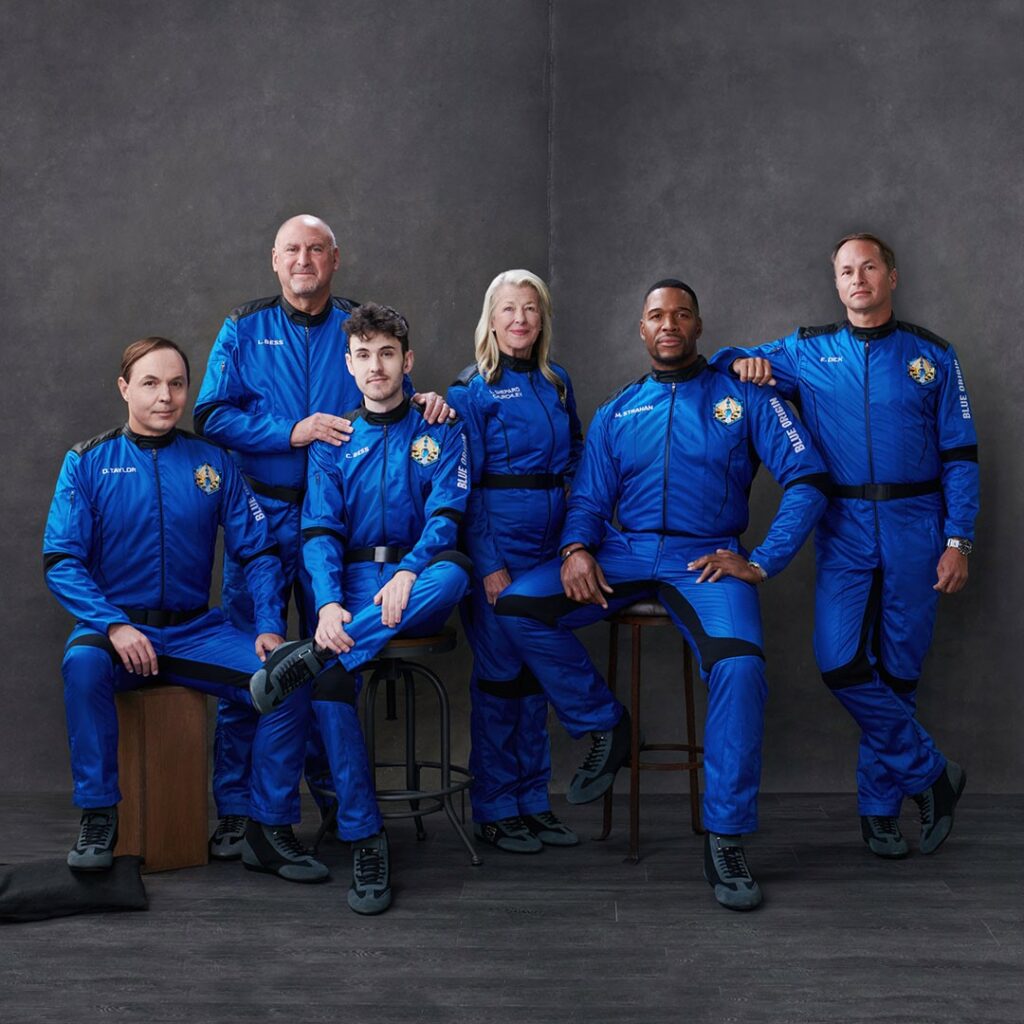
Onboard were six spaceflight participants, the first time a New Shepard carried its full complement of passengers. Onboard were Blue Origin guests Laura Shepard Churchley, the eldest daughter of the first American astronaut, Alan Shepard, TV host Michael Strahan, as well as passengers investment banker Lane Bess and his Twitch streamer son Cameron Bess, space investor Dylan Taylor, and finally Evan Dick, also an investor but not of the space variety.
In addition to the human passengers, this flight also had a NASA payload mounted to the propulsion module on the exterior of the New Shepard. As on two previous flights, the payload tested lunar landing sensors for future Artemis program missions.
This launch was one of the last chances to earn the Federal Aviation Agency’s Commercial Space Astronaut Wings. This crew, as well as fifteen other qualified spaceflight participants, will be among the last to be awarded their wings. Effective January 1, 2022, the FAA is discontinuing the program. Instead of being awarded wings, future eligible commercial spaceflight participants will have their names listed on the FAA website.
The program was started in 2004 with the intention of promoting the industry — which was in its nascent stages at the time — by recognizing the pilots and flight crew members of commercial space vehicles. The FAA stated that with “three commercial space companies now licensed … to fly spaceflight participants” the goal has been achieved, and the program is no longer needed.
From a quick suborbital flight to one that lasted almost a day.
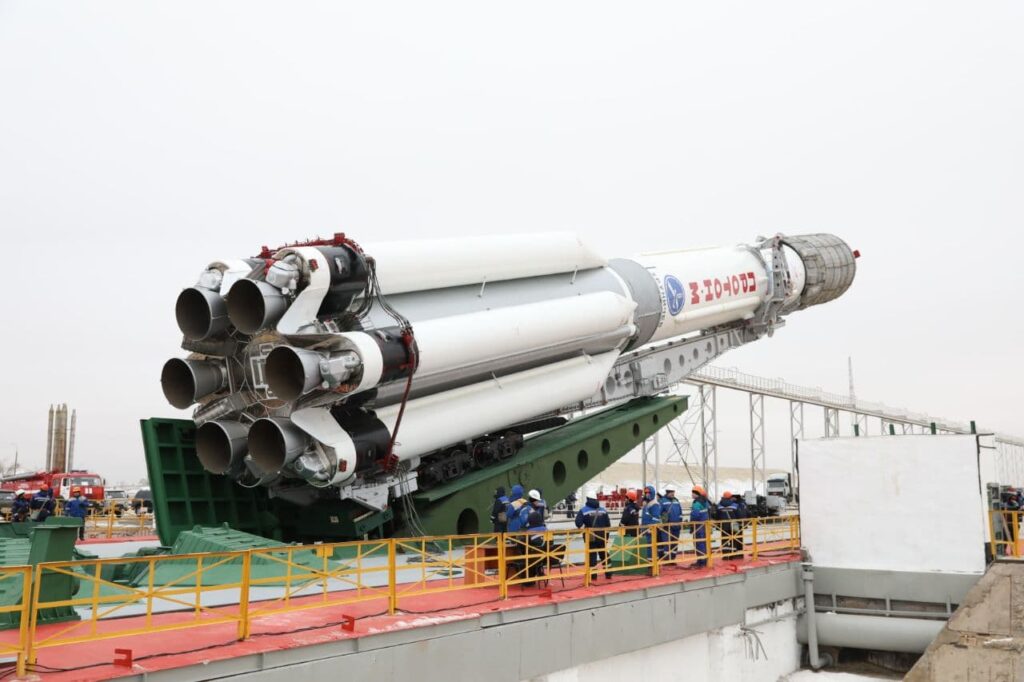
Next up, on December 13 at 12:07 UTC, a Russian Proton-M/Briz-M launched the Ekspress AMU3 and AMU 7 spacecraft into near geostationary orbit from Site 200 at the Baikonur Cosmodrome in Kazakhstan.
After an incredible eighteen hours of flight time and five burns of the Briz-M upper stage, the two payloads were separated into a very eccentric geostationary transfer orbit with a perigee of 18,700 kilometers and an apogee above the geostationary belt of 52,000 kilometers. This gets them closer to geostationary orbit than most launchers.
Both Ekspress AMU-3 and AMU-7 were built by Russian company ISS Reshetnev with communications payloads from Italian company Thales Alenia Space. According to ISS Reshetnev: Express-AMU3 and Express-AMU7 satellites will provide advanced communications, television, and radio broadcasting services for millions of users in Russia and other countries.
Just like the Soyuz, the Proton is assembled horizontally. It’s brought to the launch pad via a special slow-moving train, where it is raised vertically into its launch mount. The advantage of this assembly method is that it requires less ground infrastructure at the pad to support the rocket and reduces processing time when actually at the pad. SpaceX’s Falcon 9 also uses horizontal integration and often only needs a handful of hours at the pad before launch, occasionally rolling out on launch day.
Along with the Chinese Long March 2, 3, and 4 rocket families, Proton is one of the few rockets today that still uses toxic hypergolic propellants that spontaneously ignite when combined. Initial fueling of these vehicles requires workers to be in hazmat suits, but the use of unsymmetrical dimethyl hydrazine and dinitrogen tetroxide means that rockets can spend days at the pad without having fuel continually topped off. Like the Soyuz, Proton was originally designed to be an ICBM. All of these rockets are on their way to retirement, being replaced with better performing and less toxic launch vehicles like the Angara for Russia and the Long March 5, 6, and 7 families for China.
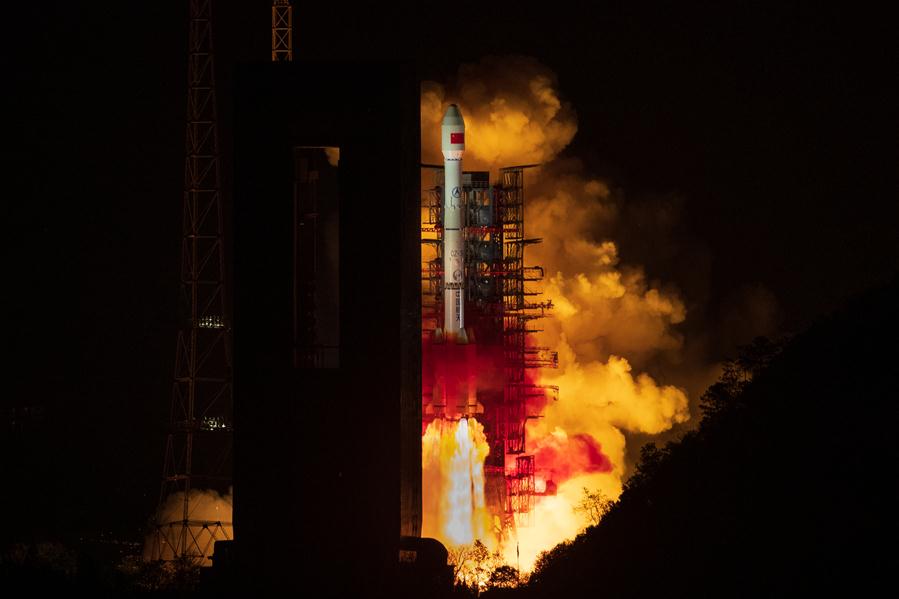
Proton-M also has an abysmal launch reliability rating – only 90%. This is another reason why it is being retired.
Our next launch is another one of those pretty but deadly hypergolic rockets.
Finally, on December 13 at 16:09 UTC, a Chinese Long March 3B launched the Tianlian 2-02 satellite from the Xichang Satellite Launch Center in China.
The Chinese were unusually candid about what this satellite’s purpose is compared to what they say about the Yaogan series. The China National Space Administration stated that it was a communications relay satellite that will be used to send back data from crewed spacecraft, other satellites in all kinds of orbits, and from their Tiangong space station. It has a secondary goal of downlinking telemetry from launching rockets.
This Week in Rocket History
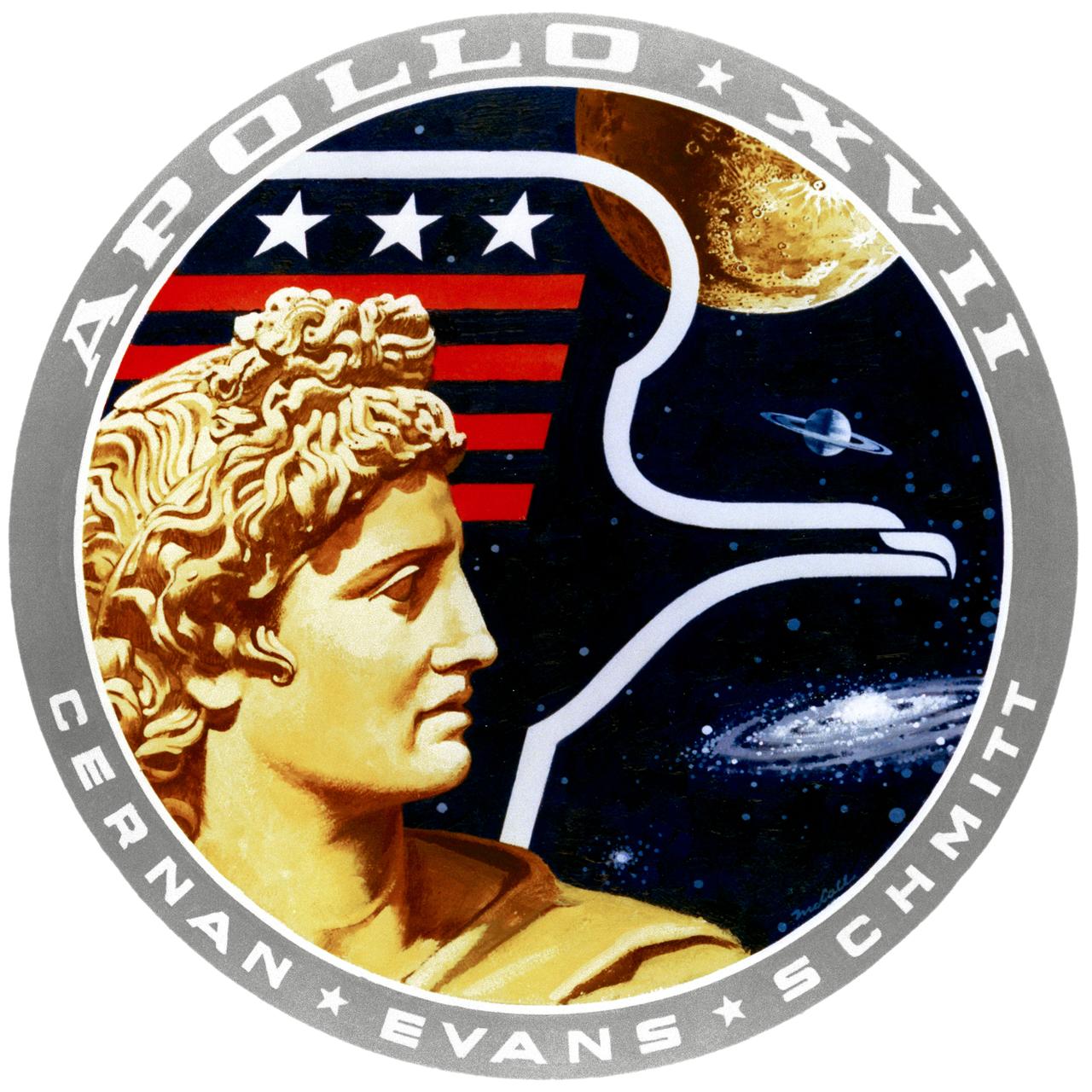
This week in Rocket History is the final Apollo lunar landing: Apollo 17. Despite being the last crewed mission to the Moon, it set a few firsts. It was the first and only lunar landing to have a scientist-astronaut instead of a pilot-astronaut with some geological training. It was also the only night launch of a Saturn V.
The Apollo 17 crew was chosen in 1969 and was originally supposed to be Eugene Cernan, Ron Evans, and Joe Engle, all test pilot astronauts. They were selected as the backup crew for Apollo 14 and would then be the prime crew for Apollo 17, per the pattern at the time.
However, in mid-1970, Apollo 18 through 20 were canceled because of budget cuts and the lack of a landing on Apollo 13. Scientists really wanted a trained geologist on an Apollo flight. In order for this to happen, NASA changed the crew assignment for Apollo 17 so that scientist-astronaut Jack Schmitt could fly to the Moon instead of Joe Engle, who later flew on two early Shuttle missions. The new backup crew consisted of lunar veterans John Young, Charles Duke, and Stuart Roosa.
With the crew sorted, NASA then focused on choosing the landing site. There were many constraints on what would make an acceptable landing site, including illumination at landing, the distance from the lunar equator, and scientific merit. Remember, this wasn’t just a trip to the Moon to bring back science — the geologists were looking for evidence of recent volcanism and wanted to see it first-hand.
Taurus-Littrow, a lunar valley, was eventually chosen. The relatively flat area met the landing site criteria. As for science, lunar landslides had also collected rocks from different parts of the Moon in one area. The valley floor was cratered from impacts, but the crater density was lower compared to other parts of the Moon. The lower crater density is evidence of volcanism where flowing lava would have covered up the missing craters before it cooled.
There was just one problem with Taurus-Littrow: the site of interest was smaller than the lunar module’s landing accuracy. At the time, landing guidance only guaranteed a landing in an oval three kilometers wide and two kilometers long. In order to land at Taurus-Littrow, the landing guidance was adjusted to allow a 1-kilometer circle landing area.

The assembly of Apollo 17’s Saturn V stack started in February 1971, and by August 1971, the rocket was complete and rolled out to the pad. The launch was set for December 6 but got delayed to very early on the 7th due to an abort at T-30 seconds.
The launch was flawless, as were checkouts in Earth orbit and the Trans-Lunar Injection burn. On the way to the Moon, the astronauts (probably Harrison Schmidt) took the famous Blue Marble photograph showing the entire Earth’s disc illuminated, including the South Pole which no other Apollo had seen. The photo essentially kickstarted a generation of environmentalists.
Another activity during the coast phase was realigning the mission clock to the flight plan since they had launched two hours and forty minutes later than planned. This was accomplished by doing some activities earlier than planned and then setting the clock forward the required time in one big jump, such that mission hour 65 was immediately followed by mission hour 67 and 40 minutes. Yes, NASA did something like daylight saving time but in space!
The rest of the coast to the Moon was accomplished without issue. Lunar orbit insertion was completed 88 hours into the mission.
Powered descent was initiated 112 hours 49 minutes and 56 seconds into the mission. Just over twelve minutes later, at 19:55 UTC on December 11, they were safely on the surface.
Only four hours after they had landed on the surface, they began an arduous series of scientific tasks. Ultimately, the crew would spend three days on the surface and do three EVA’s totaling 22 hours. Their very first task was setting up some experiments on the surface and using the rover to drive around and pick up samples, as directed by geologist Schmitt.
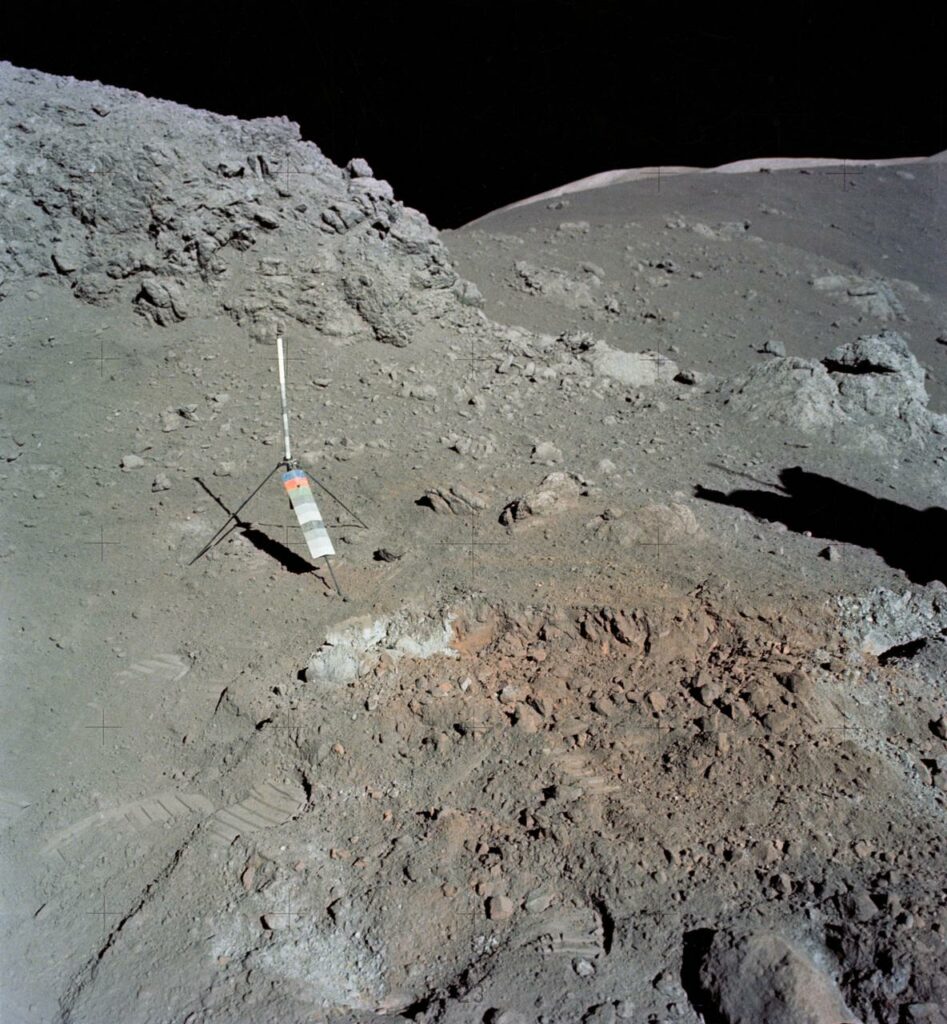
The Surface Electrical Properties experiment was designed to measure the electrical conductivity of the subsurface rocks. The experiment consisted of a transmitter placed on the ground and receiver antennas on both the Lunar Excursion Module (LEM) and the rover. The transmitter sent signals into the surface at several different frequencies to determine what was underground, especially if there was water. (The presence of water could be determined by a change in the received signal.) Astronauts drove from place to place and took data, noting where they were in relation to the LEM and the transmitter at each point. At the conclusion of the mission, the data recorder was removed and brought back to Earth. Unfortunately, not much data was actually collected by the experiment because its cloth cover was knocked off, and it overheated.
The two astronauts also placed explosive charges at various points which were later detonated after they were in orbit. The vibrations from the explosions bounced around the inside of the Moon and were picked up by special microphones placed by the astronauts.
The astronauts’ EVA time was unremarkable except for the discovery of “orange soil”, which turned out to be volcanic glass from previous volcanic eruptions. Impacts flip rock layers, which is what brought the volcanic glass closer to the surface. The geologists were able to determine that the impact was significant because a lot of that “orange soil” was present. The orange color was produced by two different glasses cooling at different rates.
Overall, Apollo 17 taught science that the lunar mare were formed by episodic welling of lava from under the surface, not from surface volcanic eruptions. Geologists also ruled out any evidence of young volcanic activity on the Moon from the sites surveyed. In the end, all the Apollo missions did was scratch the surface of how the Moon formed. It’s impressive that they were able to accomplish this using the limited hardware the Apollo program’s engineers made to accomplish President Kennedy’s goal of landing on the Moon before 1970.
Statistics
To wrap things up, here’s a running tally of a few spaceflight statistics for the current year:
Toilets currently in space: 9: 4 installed on ISS, 1 on the Crew Dragon, 1 on the Soyuz, 1 on the other Soyuz, 1 on the Shenzhou, and 1 on Tianhe
Total 2021 orbital launch attempts: 132, including 9 failures
Total satellites from launches: 1660
We keep track of orbital launches by where they launched from, also known as spaceport. Here’s that breakdown:

China: 50
USA: 42
Kazakhstan: 13
Russia: 9
French Guinea: 6
New Zealand: 6
Japan: 2
India: 2
Iran: 1
South Korea: 1
Your random space fact is that Apollo 8 astronauts took Silly Putty up to space with them. It kept them occupied and was also used to prevent tools from floating around.
This has been the Daily Space.
You can find more information on all our stories, including images, at DailySpace.org. As always, we’re here thanks to the donations of people like you. If you like our content, please consider joining our Patreon at Patreon.com/CosmoQuestX.
Credits
Hosts: Pamela Gay and Erik Madaus
Writers: Gordon Dewis, Pamela Gay, Erik Madaus, and Annie Wilson
Audio and Video Editing: Ally Pelphrey
Content Editing: Beth Johnson
Executive Producer: Pamela Gay
Intro and Outro music by Kevin MacLeod, https://incompetech.com/music/


 We record most shows live, on Twitch. Follow us today to get alerts when we go live.
We record most shows live, on Twitch. Follow us today to get alerts when we go live.